Wine Spotlight: Zesty Elegance – South African Sauvignon Blanc Brilliance
Interested in making South African Sauvignon Blanc? Give us a call at 877-812-1137 to speak to a winemaking representative about your order. Cheers!
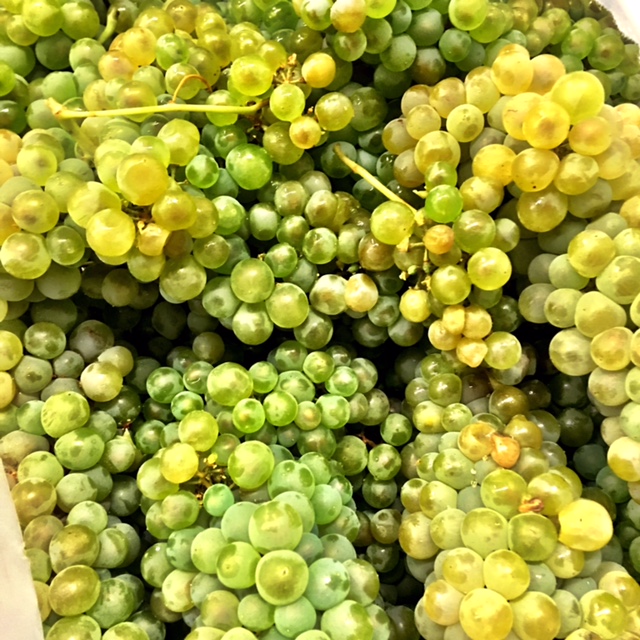
Appearance:
In the glass, South African Sauvignon Blanc presents a pale straw color with a hint of green, reflecting its youthful and vibrant nature. Its clarity and brilliance invite anticipation for the refreshing experience that lies ahead.
Aroma:
A symphony of citrus and tropical fruit aromas greets the nose, revealing the varietal’s signature characteristics. Notes of zesty lime, ripe grapefruit, and a touch of passion fruit dance harmoniously, creating an enticing bouquet. The aroma is clean, bright, and promises a burst of freshness with each sip. (yeast suggestion: R2, 71B, QA23, VIN13)
Palate:
As the wine touches the palate, it delivers a burst of invigorating flavors. Crisp green apple and lively pineapple take center stage, accompanied by hints of freshly cut grass and a subtle herbal undertone. The wine’s vibrant acidity adds a refreshing zing, creating a palate-cleansing sensation that lingers into a clean, lingering finish.
Flavor Profile:
This Sauvignon Blanc is a true expression of South Africa’s wine region terroir. The fruit-forward profile is complemented by a minerality that adds depth and complexity. The judicious use of stainless steel and glass in winemaking allows the purity of the fruit to shine, resulting in a wine that is both lively and elegant.
Pairing Suggestions:
The bright acidity and crispness of this Sauvignon Blanc make it an ideal companion for a variety of dishes. Pair it with fresh seafood, goat cheese salads, or herb-infused chicken for a delightful culinary experience. Alternatively, enjoy it on its own as a refreshing aperitif on a warm day.
Overall Impression:
South African Sauvignon Blanc is a testament to the region’s ability to craft wines that balance freshness and flavor. It captures the essence of the grape with precision, offering a sensory journey that captures the spirit of South Africa.
Interested in making South African Sauvignon Blanc? Give us a call at 877-812-1137 to speak to a winemaking representative about your order. Cheers!
Unveiling the Artistry Behind Chilean Wine: A Toast to Excellence
In the world of winemaking, few regions can boast the combination of unique terroir, skilled artisans, and a rich cultural history quite like Chile. Nestled between the Andes Mountains and the Pacific Ocean, this South American gem has been quietly gaining recognition as a powerhouse in the global wine industry. Let’s embark on a journey to discover why making Chilean wine is nothing short of an art form.
The Terroir Advantage:
Chile’s diverse geography, ranging from the arid Atacama Desert to the cool, maritime-influenced climate of the coastal areas, provides winemakers with a canvas of terroirs. The result is a wide spectrum of flavors and aromas that make Chilean wines unique. From the robust reds of Curico Valle, each sip reflects the character of its terroir.
Sustainable Practices:
Chilean winemakers have embraced sustainable and organic practices, aligning their craft with environmental consciousness. Many vineyards prioritize biodiversity, water conservation, and minimal chemical intervention. This commitment not only preserves the pristine landscapes but also enhances the purity and authenticity of the wines produced.
Iconic Grape Varieties:
Chilean winemaking is defined by its dedication to traditional grape varieties, with a particular focus on Carmenere, often referred to as Chile’s signature grape. This once-forgotten Bordeaux varietal found its new home in Chile, producing wines with luscious dark fruit flavors and a distinct spiciness. Cabernet Sauvignon, Merlot, and Sauvignon Blanc also thrive in the fertile soils, contributing to the country’s diverse wine portfolio.
Innovation and Modern Techniques:
While honoring tradition, Chilean winemakers are not afraid to embrace innovation. State-of-the-art winemaking facilities equipped with modern technology allow for precise control over the winemaking process. This fusion of tradition and innovation ensures the consistency and quality of Chilean wines, earning them accolades on the international stage.
In the world of winemaking, Chile stands as a testament to the perfect marriage of nature’s gifts and human craftsmanship. The artistry behind making Chilean wine is a celebration of terroir, sustainability, iconic grape varieties, and a commitment to excellence. So, the next time you uncork a bottle of Chilean wine, savor not just the liquid in the glass but the story of a nation passionate about producing wines that captivate the senses.
Interested in making South African or Chilean Wine? Give us a call at 877-812-1137 to speak to a winemaking representative about your order. Cheers!
Chilean Wine Notes
Why make wine from Chile? Because it’s like bottling up sunshine and smiles!
Picture this: rolling vineyards nestled between the Andes Mountains and the Pacific Ocean, where grapes bask in the perfect blend of cool coastal breezes and warm, sunny days. Chile’s diverse terroir makes it a winemaker’s paradise, offering a kaleidoscope of flavors just waiting to be uncorked.
CHILEAN WINE NOTES
Cabernet Sauvignon:
A flagship for Chile, their Cabernet Sauvignon impresses with its deep ruby color and complex aromas of blackcurrant, cherry, cedar, and tobacco. On the palate, it’s rich and full-bodied, with well-integrated tannins and a long, lingering finish.
Cabernet Franc:
Cabernet Franc from Chile offers an elegant expression of the varietal. With aromas of red berries, violet, and herbs, it’s vibrant and aromatic. On the palate, it’s medium-bodied with silky tannins and a fresh, persistent finish.
Carmenere:
Chilean Carmenere showcases the best of Chile’s signature grape. With deep purple color and aromas of blackberry, plum, and spices, it’s captivating. Lush and velvety on the palate, with flavors of ripe fruit, chocolate, and a touch of smokiness.
Malbec:
A standout example of great winemaking grapes, the Chilean Malbec boasts intense aromas of blackberry, plum, and violet, with hints of vanilla and spice. On the palate, it’s full-bodied and expressive, with ripe tannins and a long, smooth finish.
Merlot:
Chilean Merlot offers aromas of ripe plum, cherry, and spices, with subtle hints of chocolate and vanilla. Medium-bodied and smooth on the palate, with soft tannins and a lingering finish.
Pinot Noir:
The Chilean Coastal Pinot Noir exhibits delicate aromas of red fruits, flowers, and earthy notes. Light-bodied and elegant, with vibrant acidity and silky tannins, it’s a perfect expression of Chilean terroir.
Syrah:
Syrah from Chile showcases the richness and depth. With aromas of blackberry, blueberry, and pepper, it’s intense and alluring. Full-bodied and velvety on the palate, with layers of dark fruit, spice, and a long, lingering finish.
Chardonnay:
From the cool-climate region of Chile, Chardonnay offers aromas of tropical fruits, citrus, and vanilla. Medium to full-bodied, with a creamy texture and balanced acidity, it’s a delightful expression of Chilean Chardonnay.
Pinot Grigio:
Pinot Gris from Chile showcases fresh aromas of green apple, pear, and citrus, with floral undertones. Crisp and refreshing on the palate, with lively acidity and a clean, mineral-driven finish.
Sauvignon Blanc:
Chilean Sauvignon Blanc has aromas of grapefruit, lime, and herbs. Crisp and vibrant on the palate, with zesty acidity and a refreshing finish.
Viognier:
Viognier from Chile displays enticing aromas of apricot, peach, and orange blossom, with hints of honey and spice. Medium-bodied and luscious on the palate, with a smooth, lingering finish.
Interested in making Chilean Wines? We have the grapes and juices! Give us a call at 877-812-1137 to speak to a winemaking representative about your order. Cheers!
Cheers to Spring Winemaking Adventures!
Hey there, fellow vintners and grape aficionados,
As the frost thaws and the vines awaken from their winter slumber, can you feel that excitement bubbling up like a well-aged Cab Sauv? That’s right, it’s time to dust off those barrels, polish those glasses, and get ready to dive headfirst into the spring winemaking season!
Whether you’re dreaming of crisp Chardonnays, robust Merlots, or something in between, now’s the time to get those orders in. From grapes, juices, fermenting tanks, corks, and everything in between, we’ve got you covered. So, why wait? Let’s uncork the magic of spring together!
2024 Spring Grape Offerings:
Chile: Cabernet Sauvignon, Cabernet Franc, Carmenere, Malbec, Merlot, Petite Verdot, Pinot Noir, Syrah, Chardonnay, Pinot Grigio, Sauvignon Blanc, and Viognier
2024 Spring Juice Offerings:
South Africa: Shiraz, Merlot, Pinotage, Cabernet Sauvignon, Semillon, Chardonnay, Pinot Grigio, Chenin Blanc, and Sauvignon Blanc.
Chile: Cabernet Sauvignon, Cabernet Franc, Carmenere, Malbec, Merlot, Petite Verdot, Pinot Noir, Syrah, Chardonnay, Pinot Grigio, Sauvignon Blanc, Viognier, and Muscat.
Crush/Destemm will be back!
We will be crushing and destemming again this year! However, there is a minimum order of 24 cases of Spring grapes. This will give you 6 pails of must, and about 20+ gallons of juice to work with.
Winemaking Classes:
Check out Musto Wine Grape & Frank Renaldi’s online classes via our sister site WinemakingInstructions.com.
Winemaker Hours:
Winemaker Sam Lee will be in the store and available for questions on Tuesdays and Fridays from 8:00AM-4:00PM. If you want to speak to a winemaker in person, make sure to stop by and see Sam! You can also email him at slee@juicegrape.com.
March Store Hours:
Mon-Fri: 8:00AM-4:00PM
Sat-Sun: Closed
Ready to take your winemaking to new heights? Simply shoot us an email or give us a call, and we’ll make sure you’re all set to rock this winemaking season.
Here’s to the grape adventures ahead!
What is Cold Soaking?
Cold soaking, also known as pre-fermentation maceration, is a winemaking technique that is widely used in the production of red wines. It involves holding crushed red grapes at a low temperature and takes place before fermentation.
Why should I be cold soaking?
Cold soaking red grapes such as Pinot Noir, Cabernet Sauvignon, Merlot, and more has many benefits. The aim of a cold soak is to extract more aromas, aroma intensity, and color from the skins of the grapes. In red wines, it makes for a more intensely fruity and deeper-colored wine; but it also makes for a fuller wine with increased palate weight. For example, in Pinot Noir, cold-soaking extracts the softer, more supple tannins to help produce a silky mouthfeel. It also helps emphasize the lush fruit notes like dark cherry and plum. Yum!
But wait; there’s more: Firstly, time in a cold soak, even a brief one, lets a winemaker get a much better handle on the fruit at hand, enough time to get a tank thoroughly mixed, time for any raisins in the fruit to reveal their sugars, time to get more trustworthy readings on basic wine chemistry than the numbers grabbed in the rush of fruit delivery. And second, extracting some goodies early in the cycle leaves open the option of pressing slightly early and working off the last few Brix in barrel, again minimizing the influence of nasty seed tannin.
How do I do it?
It is important to maintain a chilled temperature because if the must gets too warm it can begin fermenting. To properly cold soak, you need to maintain a temperature of about 35-45 degrees Fahrenheit. This could be difficult for home winemakers without a chiller system. Try using dry ice or ice tubes ser in the wine to the wine as cold as you can. Remember, the point of the low temperature is to be sure the yeast cannot get started.
This is usually done for about 5 days, though the length of time varies according to the winemaker’s goals and the grape variety. You should add enzymes to help the extraction move along, and sulfur dioxide to inhibit unwanted microbial activity. Using inert gas to prevent oxidation is also a great idea. Inert gases, known as carbon dioxide, nitrogen, and argon are necessary for winemaking. They are used to supplant air in places where air could come into contact with the wine.
Need help with cold soaking your grapes?
Musto Wine Grape Company is here to help. Give us a call at (877) 812-1137 to speak with one of Musto’s Crush Crew members. We’re here to provide you with the best quality wine grapes, juices, and equipment, as well as the support to ensure you are successful in making the wine of your dreams!
Wine Spotlight: Greanche Blanc
A new grape has been added to our winemaking portfolio from Cry Baby – Grenache Blanc!
This grape is widely planted in Spain and the Rhone Valley.
It produces wines with good alcohol content, low acidity, citrus and herbaceous notes. A great blender for Rousanne or Muscat.
It’s best to ferment at low temperatures in order for the bouquet to flourish.
Interested in trying a new white wine this season? Email sales@juicegrape.com
Pairing Wine with Salmon
What kind of wine should you pair with your salmon, and why?
It mainly comes down to how you prepare the salmon that really determines what wine to pair with it. Salmon is a fatty fish, so it needs a stronger wine to stand up to it. It has rich fats, making a bitter and acidic wine a good general match. Salmon itself is not acidic, but those rich fats work well in place of acidity, and if you add a citrus glaze it would make the acidity in the wine harmonize better. Salmon is naturally mild but also vibrant, its actually able to work well with many different kinds of flavors.
Deciding on a wine to go with your Salmon can be complex because of all the different options in the types of salmon and how it’s prepared, so we decided to include various types of combinations because everyone has a different taste and preference!
Pairing Wine with Salmon and how it varies with various preparation methods
It’s not usual to pair a sweet wine with salmon, though a sweet glaze can call for a semi-dry wine. Reach for a rose or even a semi-dry Riesling, as both have enough lift to help enhance the sweet glaze but also pair the sweeter elements to the glazed salmon.
Reds, whites and even a rose can work as long as they are low in tannins and higher in acidity. A fuller white wine works well with pan fried salmon which becomes heavier and firmed when prepared this way.
Heavier salmon dishes like smoked salmon or ones with creamy and buttery sauces can call for a sparkling wine. Sparkling wines have the ability to lift up those heavier flavors and textures. For smoked or grilled salmon, try a prosecco. Because the acidity will pull the rich flavors of the salmon, it will also lift the heavier smokey flavors too. For a cream sauced salmon dish, grab some Pinot Grigio. This is a dry wine with a smooth finish and has the perfect amount of structure to complement but also add a textured layer to the creamy dish.
For baked or poached salmon, a classic dry wine with medium body and high acidity like a Cabernet Sauvignon from Sonoma would be an excellent pick. This is a medium bodied red wine with heavier levels of acidity but also a smooth, fruity finish making it a great option. Also, wine aged in barrels can have a real punch of flavor which would further enrich the already rich, natural fats and fresh flavors of the salmon.
Want to make your own wine to go with your next pairing?
Musto Wine Grape Company is here to help. Give us a call at (877) 812-1137 to speak with one of our Crush Crew members to get you on track to making the wine of your dreams!
Fall Foods to Pair with White Wine
As the air gets crisper, the leaves start changing color and you add layers to your wardrobe, you start to think of your seasonal favorites such as pumpkin EVERYTHING, apples and apple pie, turkey, roasted veggies and sweet potatoes.
But when it comes to pairing your wine with those delicious autumnal treats, where to begin?
Here are a few things to keep in mind when deciding which white wine to try with your fall favorites.
You might automatically think red wines when you think fall, but there are many white wines to choose from that really complement some great hearty dishes.
Choose Chardonnay or Viognier to have with your meats like chicken or turkey and a nice rich soup or bisque. Viognier also pairs well with butternut squash or carrot dishes. These wines also pair well with pumpkin flavors too such as pumpkin pie. Are you preparing some pumpkin bread? Choose a bubbly Moscato to pair with this fall treat.
And don’t forget the sweet potato fries! Pair them with that Chardonnay again; make it a un-oaked Chardonnay, so it doesn’t overwhelm the sweetness of those crispy treats!
Consider a Gewürztraminer or Vouvray when selecting an apple dish. The Gewürztraminer will be a nice addition to a plate of apple slices and add some cheese, while if you are looking to find a wine to have with a slice of apple pie, then you might prefer to pair with the sweeter Vouvray. Or if you are having an apple cobbler or baked apples, try serving it with a Riesling.
And you either love them or hate them, but Brussels sprouts are fresh in the fall and if prepared with just a bit of char, they pair really nicely with a good crisp Sauvignon Blanc.
No matter what fits your fall fancy when it comes to foods you enjoy as the days get shorter and the skies get darker earlier, but there is sure to be a wine to pair with it. Hopefully these pairings will give you ideas of what wine to purchase to complement your own autumnal specialties.
Written by Michelle Griffis aka the Nutmeg Nose for MWG
Source 1
Source 2
Source 3
Source 4
A Guide to Malolactic Fermentation
Malolactic Fermentation, also known as Secondary Fermentation or “Malo”, is the process in which Malic Acid in the wine converts to Lactic Acid.
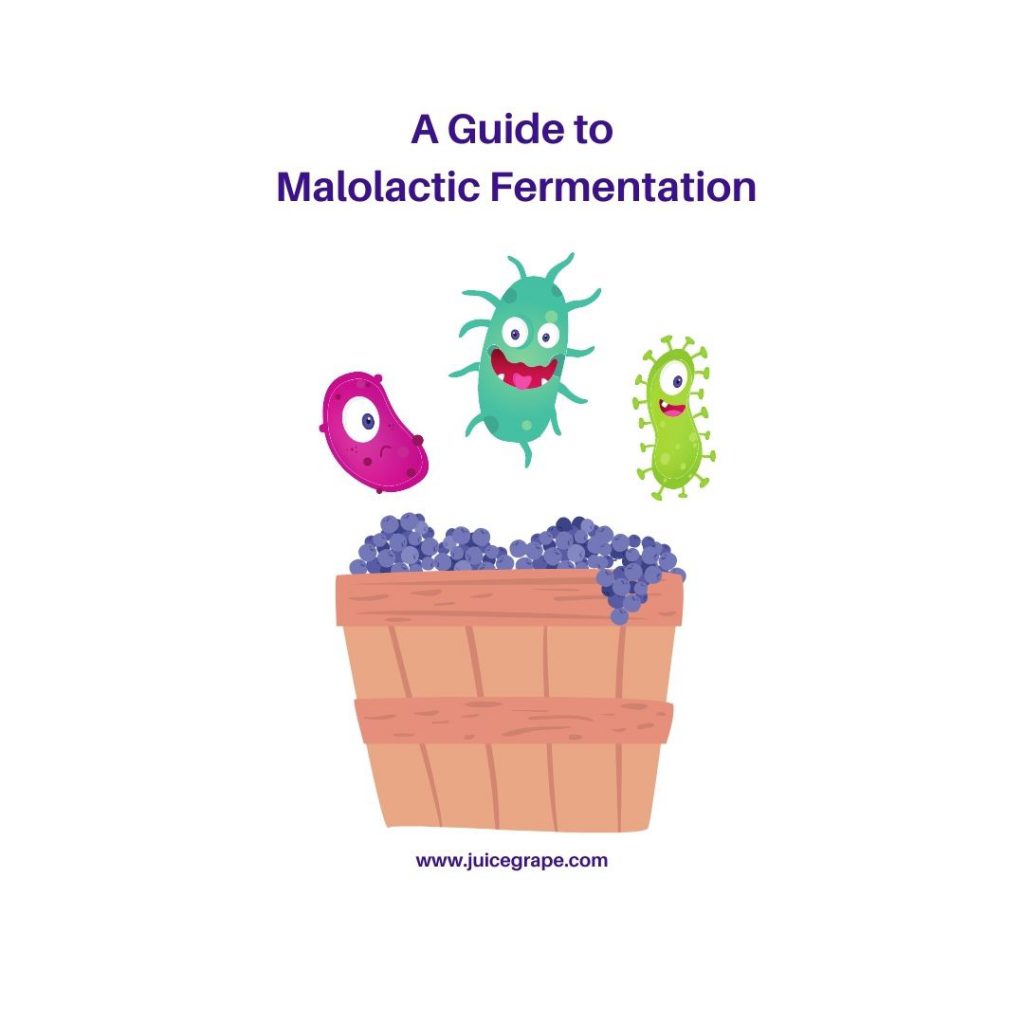
What is Malolactic Fermentation?
As stated above, it is the process in which Malic Acid in the wine converts to Lactic Acid. The primary role of Malolactic Fermentation is to deacidify the wine which affects the sensory aspects of wine, making the mouthfeel smoother and it adds complexity to the flavor and aroma of the wine. The deacidification of the wine happens by converting the harsh diprotic malic acid into the softer monoprotic lactic acid. Nearly all red wines go through Malo while only a few whites, like Chardonnay and Viognier, do. One way to recognize if a wine has gone through Malo is if it has a creamy, buttery mid-palate texture. The buttery flavor comes from diacetyl, a by-product of the reaction.
What is Diacetyl?
Diacetyl is a flavor metabolite produced by lactic acid bacteria known as Oenococcus Oeni. Oenococcus Oeni is the main bacteria responsible for conducting Malo, due to its ability to survive the harsh conditions of wine. It is responsible for the production of the sensory aspects noted above. Malo can happen naturally, though often inoculated with the bacteria culture to jumpstart the process.
When does Malo take place?
Malolactic Fermentation can happen in two different ways, during primary fermentation or after. Amid fermentation, it is Co-Inoculation. After fermentation, it is Post-Fermentation Inoculation. Inoculation that takes place after alcoholic fermentation is the most common practice. When you add bacteria cultures like MBR31 after fermentation is complete, it jumpstarts the Malo process. Co-inoculation takes place at the start of alcoholic fermentation, which allows winemakers to focus on other things such as the improvement of flavor development.
What are the signs that Malo is in progress, and how do I know if it is finished?
The best way to identify malo in progress is bubbles! The malolactic activity can be detected by the presence of tiny carbon-dioxide bubbles. When the bubbles stop, Malolactic Fermentation is complete. This can take anywhere between one and three months.
What are the benefits of each method?
Firstly, the benefits of post-fermentation inoculation include better control of the start time duration of Malo. Lessened biogenic amine production leaves the wine unprotected by sulfite for a limited amount of time. This allows less potential for spoilage by other organisms. It reduces the incidence of excessive volatile acidity and enhances flavor profiles and complexity. The benefits of co-inoculation include lower levels of the inhibitory alcohol that are present at the start of Malo, and no need to apply external heating to the ferment due to the heat generated by the yeast fermentation. This results in faster completion of Malo. This means the wine can have sulfite added earlier and reduces the potential for the growth of spoilage organisms. Finally, a bonus is that bacteria added at the start of the yeast fermentation encounter a nutrient-rich environment.
Need assistance with your winemaking process?
Musto Wine Grape Company is here to help. We offer a wide variety of products and services to help you at any stage in your winemaking journey. Email winemaker@juicegrape.com or call us at (877) 812-1137 to speak with someone who can assist you.
Headspace in Your Wine Vessel – What does it mean?
Let’s talk about headspace. Extra headspace in your wine storage vessel leads to oxidation. Oxidation leads to wine faults such as – disappearance of fruit flavors, characteristics like bruised-apple take over, the color starts to brown, and brettanomyces or volatile acidity can start to develop.
However, not all oxidation is bad. If done carefully a little micro-oxidation can give help soften your red wine wine and give it complexity. Also, some wine styles require excessive oxidation like Madera.
But for most wines we want to avoid any excessive oxidation. So how to we do that? Below are a few tips to help avoid oxidation in your wine.
1. Consistently check your aging vessels and make sure they have no headspace and are topped off
2. Limit how much air you wine is exposed to during racking, pump overs, and bottling
3. Keep track of and update your SO2 levels regularly
4. Double check tank gaskets for any leaks before use
5. Use quality corks when bottling wine
We hope these tips help! 🍇🍷🥂 Looking forward to working with you all this Spring Winemaking Season. Have you ordered your Spring Winemaking Supplies yet? Email us at sales@juicegrape.com for more details.
For more on Winemaking Faults visit our sister site WinemakingInstructions.com






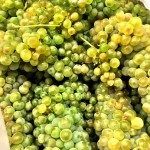

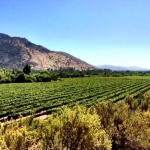
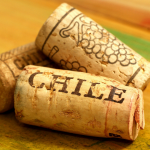
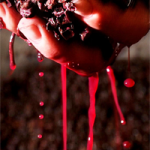
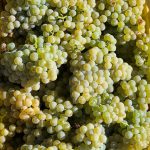
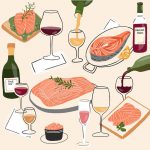

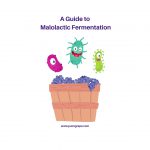
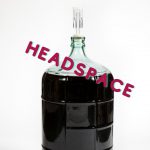
Recent Comments